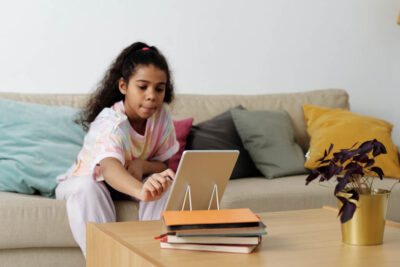Get all of EAB's COVID-19 resources in one place
While it is still uncertain how readily children can contract and spread coronavirus compared to adults, the novel coronavirus is nearly twice as contagious as the flu and can live between three hours and four days on surfaces (depending on the material, temperature, and humidity).
District and school leaders are actively taking measures to prevent or contain the spread of the current pandemic. Below are a few considerations that district and school leaders should keep in mind while working to prevent and contain outbreaks in their schools.
1. Think twice about buying expensive cleaning equipment and services
Fearing exposure to the novel coronavirus, district and school leaders might be quick to buy expensive equipment or specialized cleaning services. But these are costly measures for unconfirmed infections and isolated cases—some decontamination systems can be priced at $90,000 to $110,000 per unit and cleaning fees can range $1,500 and up each time.
With limited budgets, traditional cleaning methods may still work against the novel coronavirus. The Centers for Disease Control and Prevention (CDC) recommend soap, hand sanitizer, disposable alcohol wipes, and other routine classroom cleaning products to curtail virus spread during the school day.
For cases of suspected or confirmed coronavirus infection, the CDC has also posted interim cleaning and disinfecting recommendations for school custodial staff to contain the infection in affected areas.
2. Go (just) a step beyond the status quo with current cleaning and disinfecting practices
Custodial teams’ routine cleaning and disinfecting practices are effective against the current outbreak since they help prevent the spread of seasonal viruses, but ensure alcohol-based, EPA-registered cleaning products aligned with CDC recommendations are being used across each school. Palo Alto Unified School District’s Board policies do not allow for alcohol-based cleaning products, but this policy has been suspended to protect against the current pandemic.
Also revisit any existing cleaning and disinfecting strategies used to combat previous epidemics or regional outbreaks (such as SARS in 2003, H1N1 in 2009, and annual influenza and gastrointestinal illnesses).
Anchorage School District is reusing electrostatic sprayers purchased during a flu outbreak last year. One private elementary school in Florida is deploying cleaning strategies that they learned during a recent norovirus outbreak for the current coronavirus outbreak.
3. Educate school communities on how to minimize infection and transmission
Schools frequently disinfect high-touch surfaces, such as door handles, light switches, desks, lockers, handrails, and bathrooms, but students, teachers and staff carry personal items—especially cellphones—that are hubs for virus transmission. Coronavirus can live on glass surfaces (what most phone screens are made of) for 96 hours, and on plastics (including the casings of most laptops and keyboards) for 72 hours.
Although viruses mainly spread person-to-person, schools should also educate their community on how viruses spread from surface-to-person and disseminate lesser-known information for preventing infection.
Often overlooked practices include:
- Regularly wipe down cellphones, desk phones, laptops, keyboards, mouse, tablets, and desktop monitors
- Sneeze and cough into tissues and then immediately dispose them to limit touching microbes
- Leave bookbags and workbags on floors, instead of laying them on desk surfaces where the bottoms can transfer coronavirus from potentially infected public surfaces
4. Scale cleaning efforts to your current case status
Many district and school leaders are planning ahead as much as possible by revamping existing infectious disease outbreak protocols and coordinating with county and state public health authorities. Oregon City School District created a Disease Prevention Supplemental Facilities Cleaning Plan that clearly defines different kinds of cleanings (routine vs. emergency) and their areas of responsibility. Denver Public Schools follows an infectious disease protocol to determine cleaning types based on the number of absences at individual schools.
From these examples, consider the following when creating multi-step plans:
- Custodial staff clean and sanitize high-touch areas at an increased frequency
- Routinely clean personal areas (desks, keyboards, phones, remote controls, etc.)
- Audit shared spaces for hidden virus hubs (shared sponges, open plastic cutlery, etc.)
- Custodial staff clean and sanitize high-touch areas and immediate surroundings daily
- Clean and disinfect high-traffic surfaces (lockers, elevators, recreation equipment, vending machines, printers)
- Conduct frequent surface audits with custodial heads to find overlooked high-touch areas
- School closure for concentrated cleaning/disinfecting in cases of multiple infections
- Contract external professional cleaning services for high number cases and monitor progress
- Coordinate with public health authorities for further action and investigation
5. Coordinate and communicate clearly and frequently with staff overseeing shared spaces
From teachers to bus drivers, everyone has a role in preventing coronavirus spread, especially staff managing shared school spaces (e.g. classrooms, cafeteria kitchens, buses, and recreational areas). Clearly define roles for teachers and administrative, custodial, medical, and transportation staff for each stage of an infectious disease outbreak. Then, communicate changes as soon as possible once situations and available information evolve. For example, remind teachers and staff that school custodial staff are responsible for disinfecting because they are trained on properly handling disinfectants. Also, communicate whether teachers and staff should be responsible for cleaning and disinfecting personal items or specific classroom areas.
District and school leaders should continue to collaborate with principals and head custodians when to revisit cleaning plans, allocate resources, brainstorm overlooked high-touch areas, and discuss custodial staff training needs in case of confirmed coronavirus cases at a school.
Additionally, district and school leaders should continue to coordinate with transportation department heads and bus contracting agencies to ensure buses are being cleaned and disinfected according to CDC guidelines.
Information about the novel coronavirus pandemic is rapidly evolving and can be often conflicting, but increasing frequency of routine cleaning, coordinating closely with administrators and staff, and communicating openly with the school community, district and school leaders can start to get ahead of the virus spread.
Additional resources on this topic
5 actions boarding school leaders should consider when navigating COVID-19
With rapidly evolving recommendations for preventing the spread of COVID-19, heads of boarding schools are quickly making decisions going beyond those of the traditional K-12 institution. Read the expert insight for five action steps to keep in mind as boarding schools across the globe modify infrastructure and policies to help reduce the risk of infection.
4 short-term strategies to support teachers in responding to the COVID-19 Pandemic
School and district leaders are facing many difficult choices in the midst of the coronavirus outbreak, especially when trying to balance the needs of their students with the health of the greater community. Read this insight for four short-term strategies to support teachers in responding to the COVID-19 pandemic.


